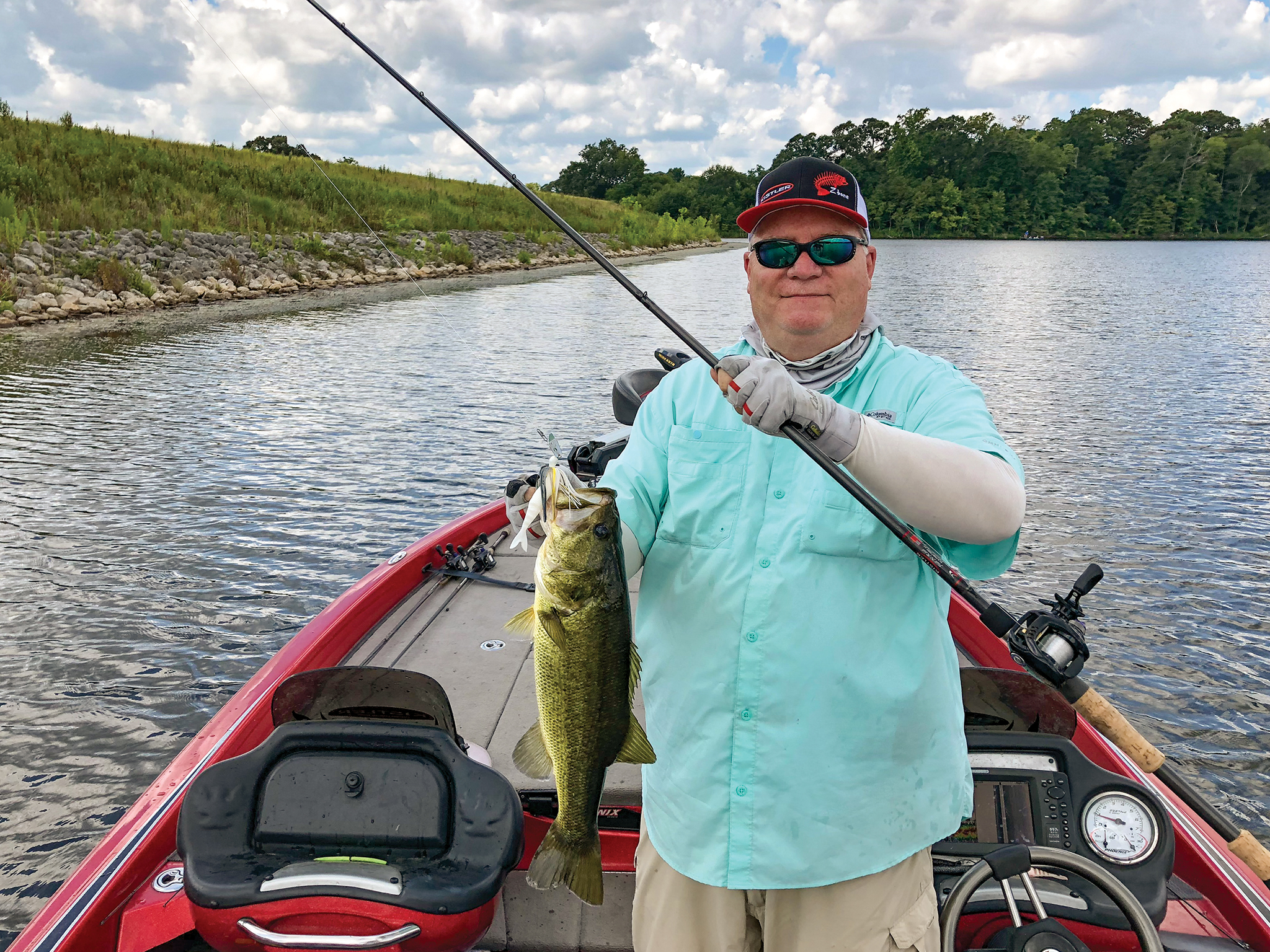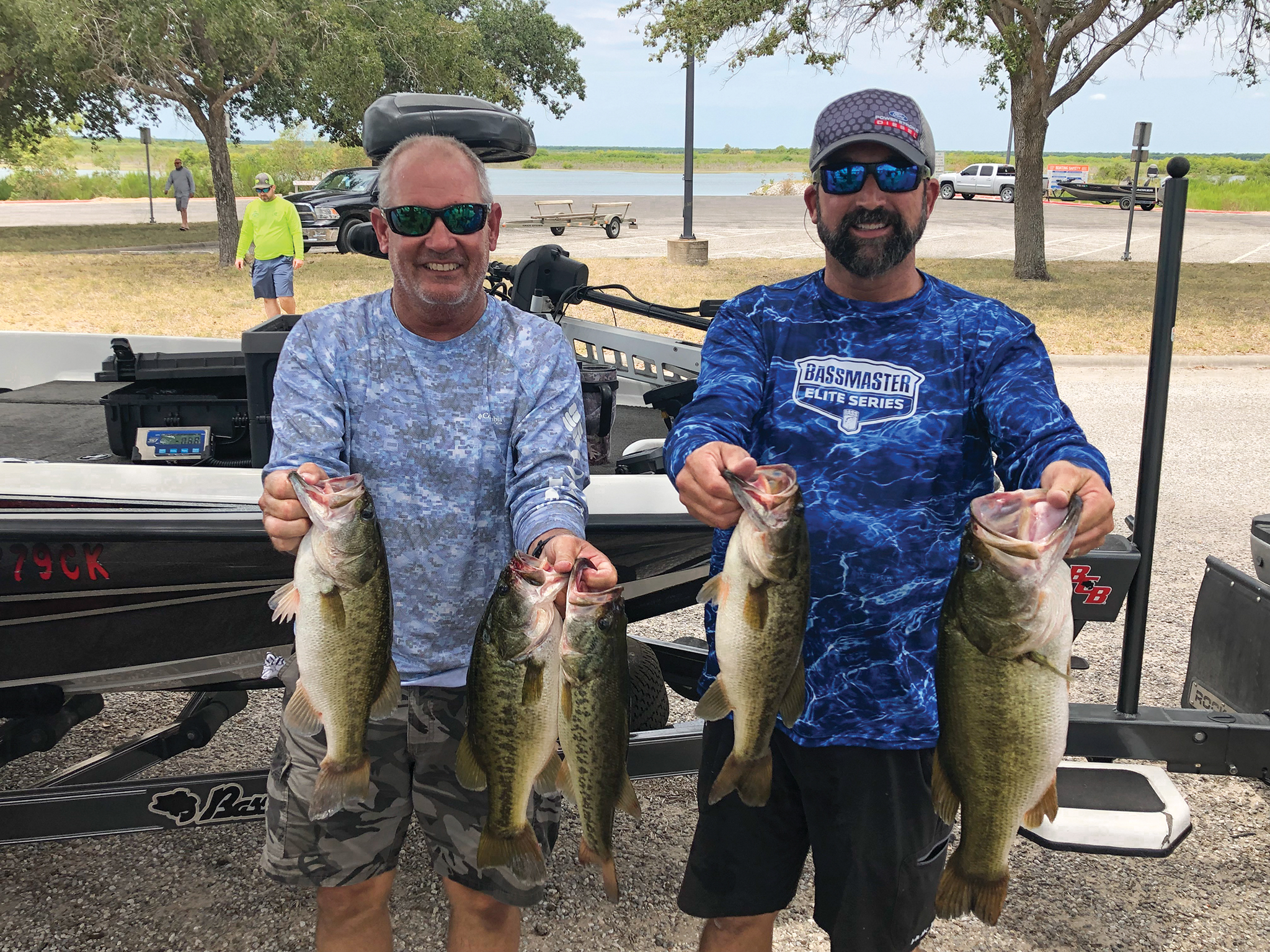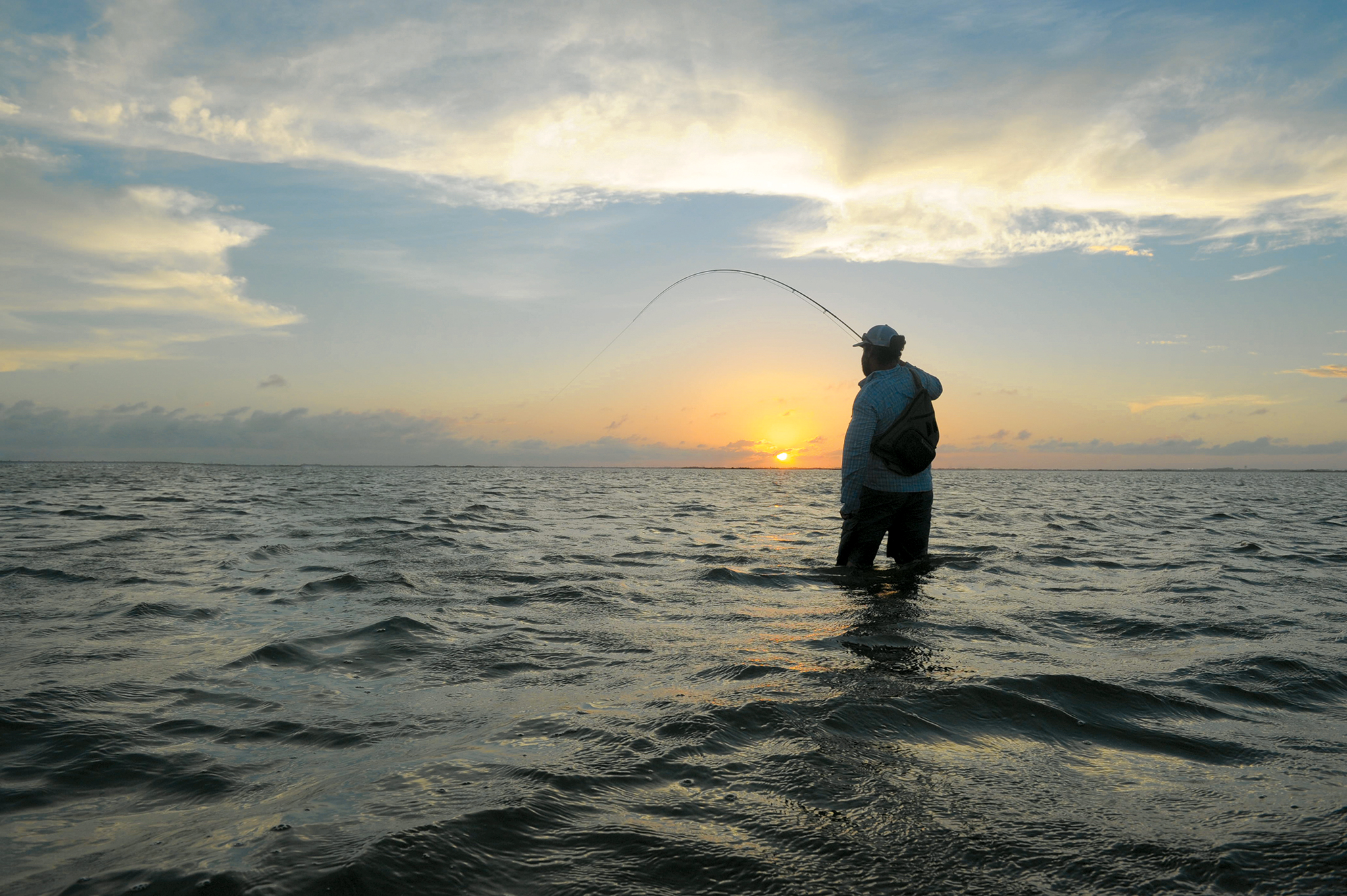
Photo by Earl Nottingham / TPWD
NICE CATCH
Getting the Feel for Fall
October's cooler temperatures mean adjusting your fishing techniques.
By Randy Brudnicki and Art Morris
October is a major transitional month for Texas fishing. As the weather cools, lakes turn over and the fishing can be hot and cold at the same time. Fish go into an inactive mode when there are rapid changes in oxygen levels as thermoclines diminish.
For those fishing the northern part of Texas, this transition happens more quickly as winter conditions start to set up in November. October is usually a very comfortable time to fish.
ROCKPORT
FLOUNDER
Highly prized for their superb taste and the distinctive methods used to catch them, flounder are a unique sport fish for Rockport anglers. While flounder are found in all bays, Aransas Bay has more than its fair share. There is no better time to target them than at the beginning of the fall spawning run in October. Rockport offers lots of access, numerous guides and plenty of flounder. AM

Photo by Randy Brudnicki / TPWD
LAKE NACONICHE
LARGEMOUTH BASS
Big-bass haven Naconiche is a small body of water (692 acres) not far from Nacogdoches, but the lake fishes big. It’s pretty much a flooded forest. Leaving from the boat ramp, you’ll find safe navigation going toward the dam; if you venture away from the ramp, the channels become narrower, so be cautious.
The boat ramp splits the lake. The left side (as you leave the ramp) is more open until you pass the fishing pier on the left.
Going to the right of the ramp means traveling in the midst of flooded trees for several miles. A boat lane is staked, but it’s very narrow and winds around with unexpected turns. Even in the lane, you’ll encounter obstacles, many barely below the surface. Expect to bump into stumps with your boat and motors. Many times, you’ll scrape your boat’s rubrail along a tree as you maneuver around tight cover while fishing. You might not mind, because that’s where the fish can be found.
Look for aquatic vegetation — these are productive fishing spots, too.
With so much cover, the bass could be anywhere, right? Not really. Bass are apt to move around in October — they could be shallow or deep — but you can pinpoint likely areas by observing the surroundings.
Watch the shoreline for changes in contours. A keen eye can spot areas that are more open, such as where an old road ran through the area before it became a reservoir. Another trick is to look for places where a row of trees forms a line delineating an edge (such as a channel or road). If you can find a spot where a channel and road come together, you may have found a sweet spot.
Here are some successful techniques and lures.
• Retrieve swim baits rigged weedless.
• Flip Texas-rigged plastic worms, creature baits or lizards.
• Run spinner baits as tight to the tree trunks as you can.
If you spend time looking, you’ll find moderately open areas where you can test other techniques. In areas where it is feasible, a deep crankbait can be very effective. A square bill can be fished around the shallow trees.
If a cold front moves in, try jerk-baiting areas along the dam. Because the lake is small, you can fish a lot of it in a day.
If you want to learn flipping/pitching techniques, Naconiche is the lake to practice on. You can do this all day. Start with heavy line such as 20- to 25-pound fluorocarbon or monofilament or 50- to 80-pound braid. (A medium-heavy rod is on the light side of what you’ll need.) You may hook more bass on lighter line and gear, but if you try wrestling an 8-pounder out of a tree on lighter gear, she will win most of the time. RB

Photo © Randy Brudnicki
CHOKE CANYON RESERVOIR
LARGEMOUTH BASS
Great things happen when you add water. A year ago, Choke Canyon Reservoir was at about 25 percent capacity, but it’s risen almost 15 feet since last fall and now hovers near 50 percent capacity. That’s still low, but fishing is improving quickly.
Catfish and white bass fishing persevered during the low-water period, but largemouth bass fishing suffered. The rise in lake level has re-energized the pursuit of bass. In fact, two largemouths weighing more than 10 pounds were caught this summer. This lake has a lot of trees and brush, but recently the aquatic vegetation took off and the bass moved into it.
The water level will likely lower as rains decrease, but that can be a good thing. With so much vegetation, it’s hard to pinpoint the bass. They could be anywhere. With less area covered by the vegetation, search time should shorten. Start with moving baits to locate active fish. Try chatter baits, swim baits, swim jigs and spinner baits. Shad colors with a chartreuse highlight are a good combination.
Choke has so much wood, it would take days or weeks to fish it all. Trees and brush near or in the grass (aquatic vegetation) should not be overlooked. Take a Texas-rigged plastic bait and pitch it next to the wood to get a reaction bite.
In areas where the vegetation is especially thick and matted, use a technique called punching. Use a very heavy weight (1 to 2 ounces) on stout line and a craw-style plastic bait. A more compact bait falls through the vegetation easier because it doesn’t hang up as much. You may even need to toss the offering into the air so it gains momentum as it falls (punches) through the vegetation. Let it drop straight down to the bottom.
If you don’t feel a bite right away, shake it a little, pause and, if still no bite, lift it to touch the underside of the matted grass, shake it again and wait for a second. Still no bite? Reel in and toss it to another good-looking spot. If a big fish eats your bait, set the hook hard and start reeling/lifting it out so it doesn’t wrap in the grass.
The dam area sometimes is a good place to fish, with more open water, so deep-diving crankbaits can be effective. This area can be good at night or in low-light conditions. There are two state park boat ramps. The south ramp is closer to the dam, and the Calliham ramp offers many options for coves and protected areas, if it is windy. If you are unfamiliar with the lake, take your time and even idle at times. You’ll find great camping in the park, so plan to spend a few days. RB

Photo by Chase Fountian / TPWD
BAFFIN BAY
TROPHY TROUT
There’s a place in Texas where legends are born: the land of giant spotted seatrout. Putting your hands on a trophy spotted seatrout from these waters requires dogged resolve and devoted patience.
Nevertheless, for the determined, there’s no better environment. A hypersaline bay within the upper Laguna Madre complex, Baffin Bay is world class when it comes to trophy spotted seatrout angling.
While others are chasing red drum and flounder runs in October, Baffin Bay anglers don’t miss a beat and target spotted seatrout. Because of the cooler temperatures, calmer winds and fewer boaters, the fall months tend to rate highly in spotted seatrout anglers’ minds.
Cut off from the outside world by the famous King and Kenedy ranches, the bay is literally off the beaten path. The only direct access to the system is at Riviera Beach on the extreme western end of the bay. The next closest launch is about 15 miles north toward Corpus Christi from the mouth of the bay. That doesn’t deter those seeking a world-class angling adventure.
Famous landmarks such as the Badlands, Starvation Point, Black Bluff and Point of Rocks all give some trepidation to new visitors, mainly because they are named for rock-hard patch reefs. These celebrated sites provide vertical hard structure to an otherwise open mud/sand bottom. To some, Baffin Bay is a real pain to fish; to others, it’s an indulgence. The silence can be deafening, but the trophy spotted seatrout fishing is second to none. AM

